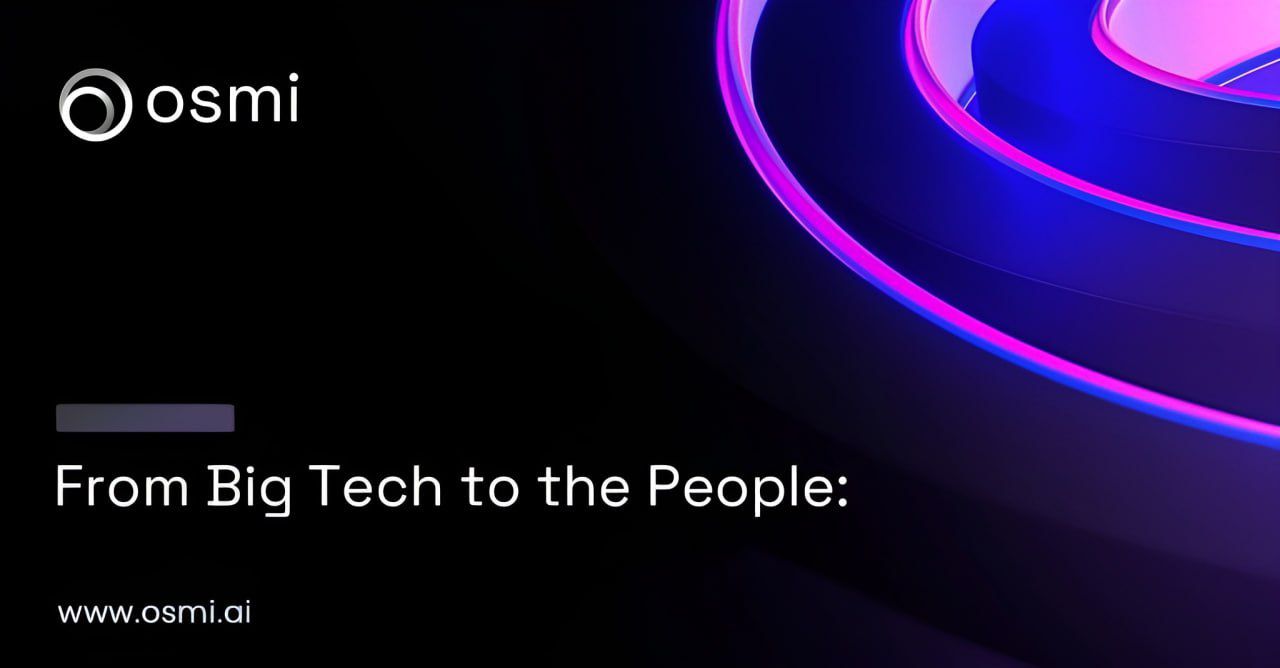Did you know that nearly 75% of global computing power for AI remains unused, sitting idle? This staggering figure reveals a massive gap in how we manage and utilize resources, even as the demand for AI computing power continues to soar.
AI is growing at an unprecedented pace. The global AI market is projected to expand from $184 billion in 2024 to a staggering $826.7 billion by 2030.

Source: https://www.statista.com/outlook/tmo/artificial-intelligence/worldwide
Similarly, the AI infrastructure market is on a rapid growth trajectory, expected to surge from $46.15 billion in 2024 to $356.14 billion by 2032, with an impressive CAGR of 29.1%.
This growth highlights the urgent need to rethink how we allocate and optimize resources to keep up with AI’s transformative potential.

Source: https://www.fortunebusinessinsights.com/ai-infrastructure-market-110456
Yet, almost three-quarters of this capacity remains underutilized—mostly in the hands of big tech companies.
What if we could unlock this untapped potential? This is where decentralized AI steps in. By combining the power of Artificial Intelligence and Blockchain, decentralized AI optimizes resource usage while enhancing security, transparency, and fairness in AI systems. It offers a transformative way to rethink AI’s future and make it more accessible for everyone.
Addressing Core Challenges in AI Infrastructure
Right now, most AI systems are controlled by a few big companies, which creates a lot of problems:
- AI needs a lot of computing resources, but only a few organizations have them.
- Centralized AI systems tend to reflect the values of the companies behind them, leading to biased results.
- When a few companies control AI, they can manipulate or suppress information based on their own interests.
- AI development is often driven by money, not by the desire for transparency or fairness.
- Small developers and researchers can’t contribute because the cost of current AI setups is too high and centralized.
Key Features of Decentralized AI
Decentralized AI tackles these problems with a more open system:
- Decentralized GPU Networks: It uses idle GPUs from around the world. This lowers costs and makes computing power available to more people.
- Empowered Contributors: Anyone can share unused computing power and earn rewards. This invites more people to help improve AI.
- Democratized AI: Decentralized systems are fair and transparent. They use open-source, censorship-resistant frameworks to build unbiased AI models with diverse data. This makes AI more inclusive and accessible for everyone.
The Role of OSMI in Decentralized AI
OSMI (Operating System Most Intelligent) is an example of a project working to realize the potential of decentralized AI. By leveraging GalaChain’s fast and affordable blockchain, OSMI is developing a decentralized AI infrastructure that reduces the influence of corporate entities. GalaChain enables low-cost transactions, which makes it ideal for AI services and helps ensure that AI resources are accessible to anyone, not just large corporations.
OSMI’s decentralized model allows users to contribute their GPU power to the network in exchange for rewards. This decentralized approach helps democratize AI, giving individuals an opportunity to participate and benefit from its growth. The $OSMI token plays a key role in this ecosystem, facilitating payments for GPU rentals and premium features, while also providing governance rights to token holders. By enabling users to vote on platform development, OSMI ensures a more community-driven approach to AI evolution.
Additionally, the $OSMI token rewards contributors, node operators, and developers, incentivizing further network growth. A built-in burning mechanism reduces the total supply of tokens, potentially increasing their value over time. OSMI has already launched its decentralized GPU infrastructure and a public beta of its AI assistant, with plans to introduce a GPU marketplace and expand token utility by 2025.
Broader Implications of Decentralized AI
Decentralized AI is set to change industries by improving privacy, security, and access to AI tools. With stricter rules and growing concerns about data privacy, it helps users keep control of their data and reduces risks of breaches. Technologies like federated learning and blockchain will make AI systems more secure and reliable.
This shift will move beyond healthcare and finance. It could impact energy, telecom, and government services by improving operations and decision-making. For example, in energy, decentralized AI can manage local grids and reduce waste.
AI-driven DAOs will also grow. These use AI to manage resources and could change how organizations work. Combining decentralized AI with 5G, IoT, and quantum computing will allow real-time decisions in smart cities and advanced automation.
Having said this, scalability remains a challenge. Better consensus methods and federated learning will be key to its growth. Rules and ethics must also adapt to guide development and build public trust. Decentralized AI can help marginalized groups benefit from its use.
Wrapping Up
As AI evolves, the shift from centralized control to decentralized innovation is gaining momentum. Leading this change, OSMI demonstrates how ethical frameworks and sustainable models can shape a more inclusive and transparent AI ecosystem. By optimizing resources and empowering individuals, OSMI highlights the potential of decentralized AI to create meaningful, people-driven progress.
This quiet but powerful movement reimagines what AI and Web3 can achieve when built with fairness and collaboration at their core. OSMI is a glimpse into a future where technology serves everyone, not just a select few.
Disclaimer: The information provided is not trading advice, Bitcoinworld.co.in holds no liability for any investments made based on the information provided on this page. We strongly recommend independent research and/or consultation with a qualified professional before making any investment decisions.


